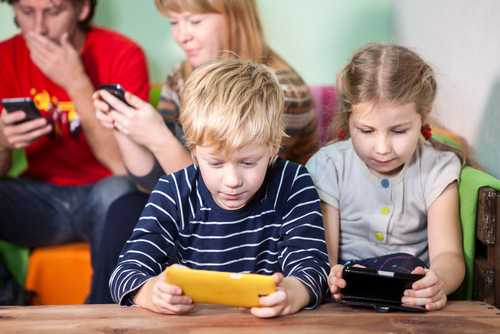In our digital world, some parents may feel lost at sea. Here’s what they need to know
[Ed. note: Carl Hooker will deliver a related session on digital parenting at this year’s ISTE conference on Monday June 29. Previous ISTE coverage has focused on iPads and coding and keynoter Josh Stumpenhorst.]
 What ever happened to the good old days? When I was a kid I used to listen to music my parents didn’t like and stay out riding my bike until the street lights came on. Today, our kids have scheduled playdates and a steady stream of organized activities, and spend the rest of their time connecting to others online. We no longer live in an analog world, yet why do we think our parenting should look the same as it did back then?
What ever happened to the good old days? When I was a kid I used to listen to music my parents didn’t like and stay out riding my bike until the street lights came on. Today, our kids have scheduled playdates and a steady stream of organized activities, and spend the rest of their time connecting to others online. We no longer live in an analog world, yet why do we think our parenting should look the same as it did back then?
As an administrator in a one-to-one mobile device district, I’ve seen firsthand how access to devices can disrupt learning for both good and bad. But we forget that this disruption also occurs at home when the students take their device home. Our teachers hopefully have hours and hours of support and training for integrating these tools in the classroom, but what help are parents getting?
The first reaction of parents is to take away the “threat” (in this case the technology). They’ll look for the quick and easy way to block, filter, monitor and track everything their kids are doing online. Don’t get me wrong, I think it’s good to be aware of things your kids are doing. Last fall I wrote this letter to parents about YikYak and social media awareness. While parents were happy to hear about this new app, I also sensed an increase in frustration and helplessness. How can we stay ahead of our kids? They seem to have the two things we don’t have: time and lack of responsibility.
Next page: A hard truth for parents: There’s no easy way out
The hard truth, and the thing a lot parents don’t want to hear, is that there is no easy way out. There is no magic button. There is no all-seeing, all-knowing internet filter. You can lock the doors, windows, and network but little Johnny or Mary can still get into mischief. And the reality is that we have ourselves to blame. Why do kids jump from social media network to social media network? Because we “old people” decided to get on Facebook. I see the same trend happening with Instagram now.
So what’s a parent to do in this new digital age? Well, the past might actually help. Many of the same tenets of classic or analog parenting can help us still today. Think about it this way—if you have a dozen cupcakes sitting out on the countertop, do you let your kids eat all of them? The same can be said with screen time or time online. Guidelines and limits are a part of parenting, whether it be digital or analog. Technology can actually help with this in terms of lock screens and time limit trackers. It can provide some data for kids to learn how to be self-sufficient, but only if there are consistent guidelines and expectations.
While parents may try and create these new guidelines in clever ways (like this article on kids earning their wifi password), they often don’t model the behavior they want their kids to follow. I’ve been in countless playgrounds, museums, and aquariums where I see kids interacting and having fun while their parents check Facebook pages or text friends. Yet we complain about our kids with their noses in their phones. We need to look in the mirror before looking out the window sometimes.
So with all this change in the world with our kids, what’s a parent or school district to do? The lines between home and school have been forever blurred and perhaps it’s time to revert back to the old mantra of “It takes a village to raise a child.” Schools need to be having conversations with parents about the digital responsibilities their kids need to be adopting. Especially in school districts with mobile device initiatives—whether it be one-to-one or BYOD—parents need to have a voice in the learning process. I’d argue that we need to take it a step further and provide parents with some level of support, much like we do with teachers.
Helping parents learn guidelines, new tools, social media look-fors, and “digital parenting” skills helps create a dialogue and platform for conversation between members of the community. Providing resources (like this online course) for parents gives them some level of buy-in and support of the program too, which can only help with its success. If parents are modeling the same things at home that are happening at school, kids will see the use of technology not as a toy but as a learning tool. In return, parents can gain some new skills to mesh with the old and help them survive this transition to the new digital world of parenting.
Carl Hooker is director of innovation and digital learning at Eanes ISD in Texas.
- TC- What student choice and agency actually looks like - November 15, 2016
- What student choice and agency actually looks like - November 14, 2016
- App of the Week: Science sensor meets your smartphone - November 14, 2016

